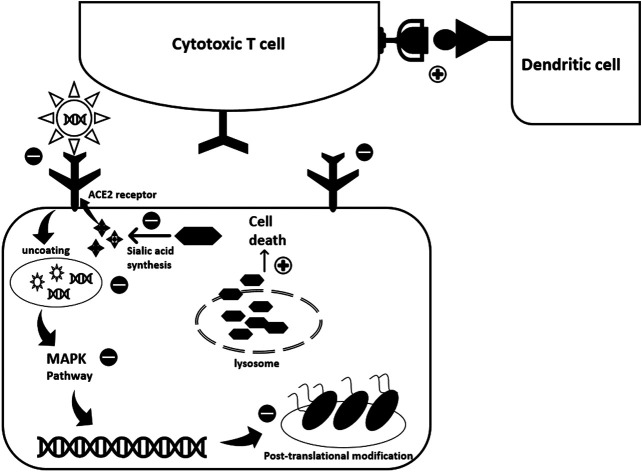FIGURE 1.
Potential antiviral activity of Hydroxychloroquine against SARS-CoV-2. HCQ exhibits its antiviral activity through interfering with various steps of the viral replication cycle. While exact mode of action against COVID-19 is not totally revealed, experience with previous viral infections highlights possible scenarios. First, HCQ acts at the pre-entry level. It inhibits SARS-CoV-2 entry into the host cell through three different mechanisms: 1) It binds to the sialic acids and gangliosides, key components used by the spike protein for viral entry; 2) It binds to spike protein-ACE2 receptor complex; 3) It inhibits the activity of Quinone oxidoreductase 2 (QR2) which is essential for sialic acid biosynthesis. Sialic acid is important for ligand recognition. Second, once the virus enters the cell HCQ inhibits the pH-dependent uncoating process by alkalinizing the acidic endosomes. This constrains viral-endosome fusion and consequent viral DNA release into the cytoplasm. The pH-dependent viral entry to the host cell was encountered with previous coronaviruses. Besides, HCQ impedes viral replication by blocking the p38 MAPK cascade. Also, it acts at the viral protein level where it interfere with post-translational modifications such as protein glycosylation. This alters SARS-CoV-2 proteins, affecting viral ability to interact with future host cells. The effect of HCQ extends to induce infected cell death through increasing lysosomal membrane permeability and consequently allowing proteolytic enzymes leakage into the cytoplasm. Finally, HCQ promotes the immune response through enhancing antigen expression by the dendritic cells thus activating cytotoxic T-lymphocytes.

